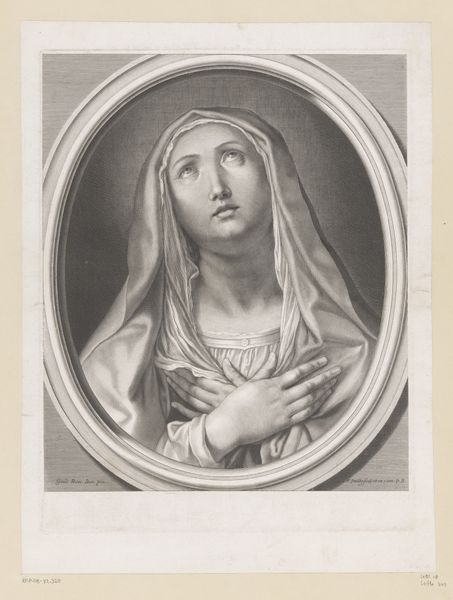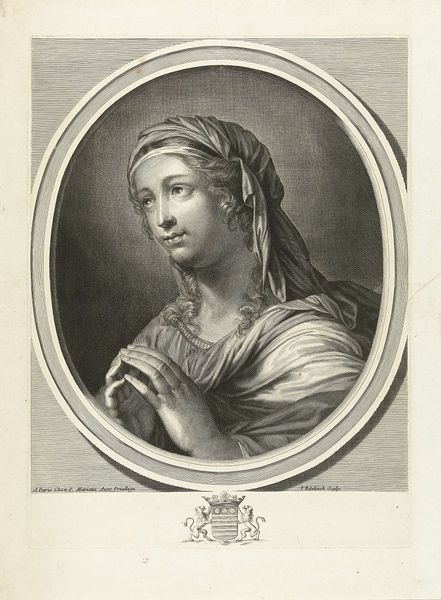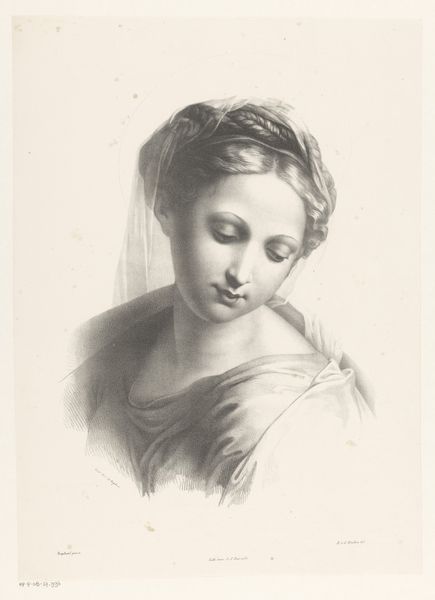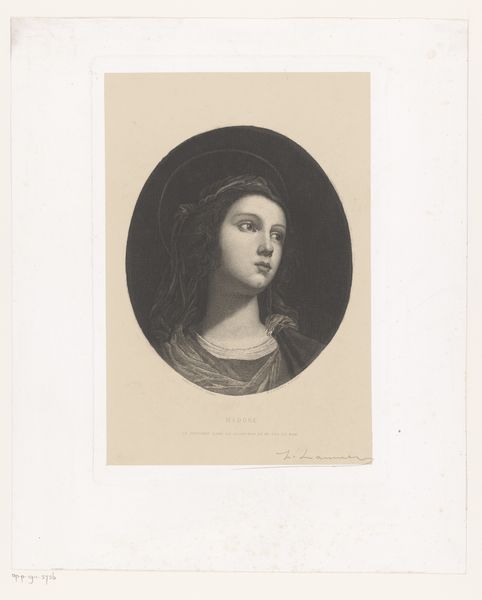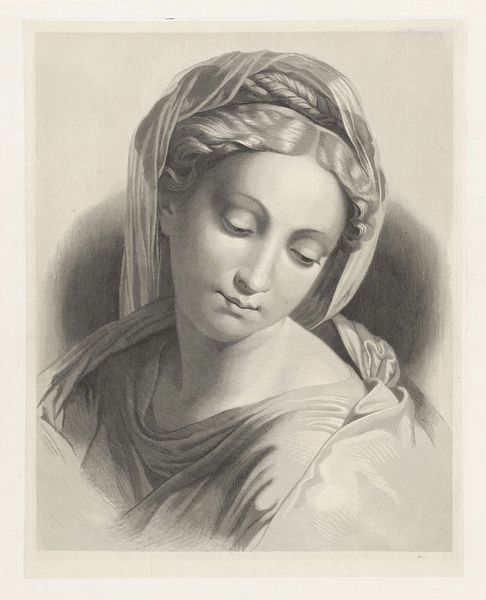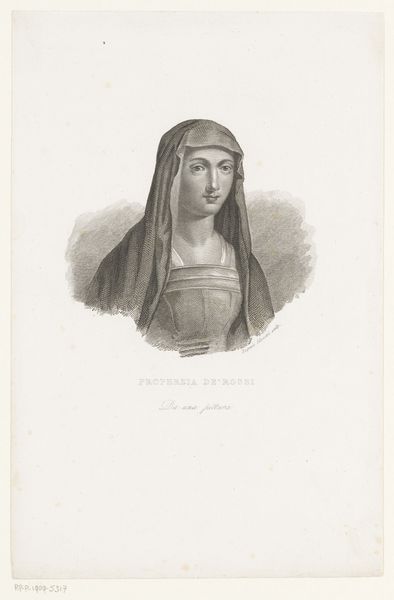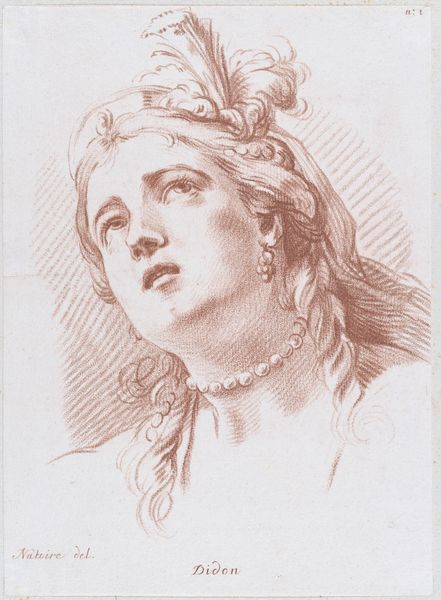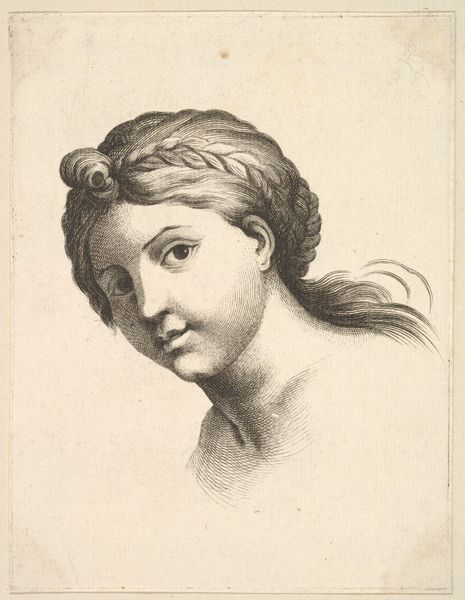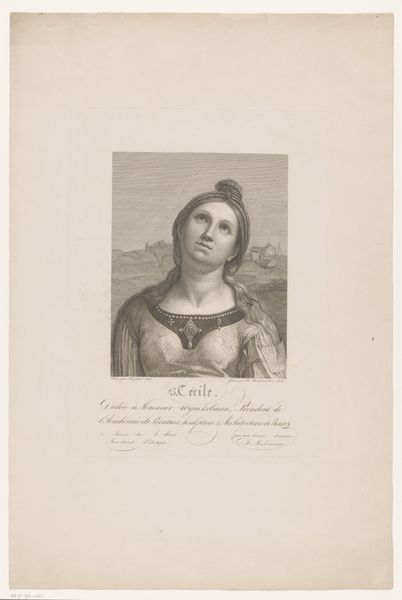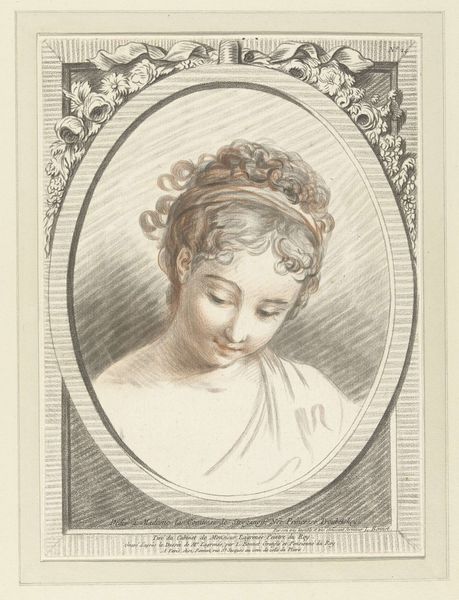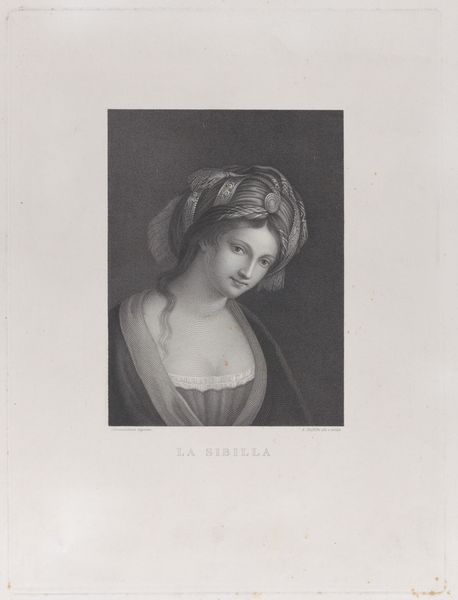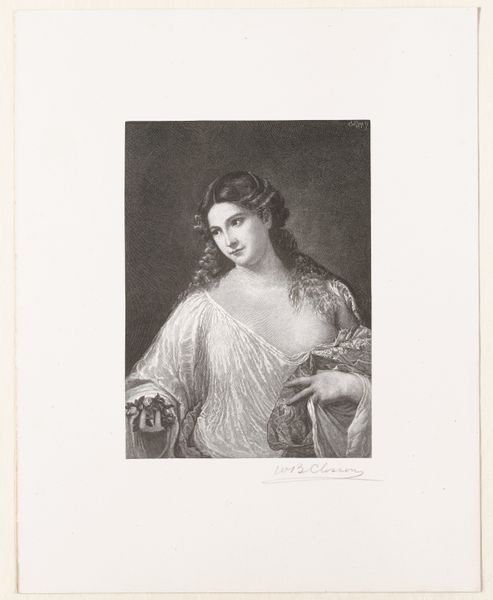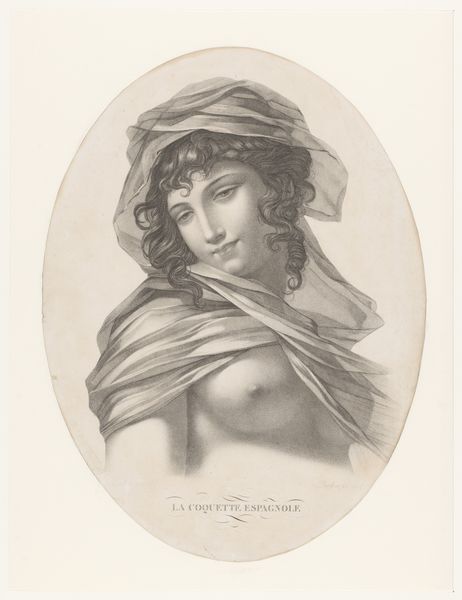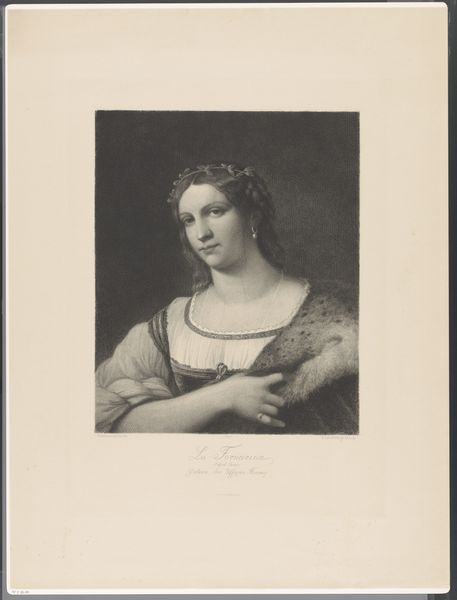
drawing, engraving
#
portrait
#
pencil drawn
#
drawing
#
neoclacissism
#
light pencil work
#
yellowing background
#
pencil sketch
#
figuration
#
portrait reference
#
pencil drawing
#
line
#
portrait drawing
#
engraving
#
watercolor
Dimensions: height 567 mm, width 488 mm
Copyright: Rijks Museum: Open Domain
Louis Charles Ruotte created this print of Heilige Cecilia through etching and engraving, techniques that transform an image into a series of precise lines and tonal gradations on paper. Look closely, and you'll see how the etched lines define the contours of Cecilia's face, while the engraved areas create subtle shading and depth. The choice of these processes, rather than painting, is quite telling. Printmaking allowed for the wide distribution of images, democratizing access to art. It allowed for the creation of multiple copies, making it accessible to a broader audience beyond the elite. The labor-intensive processes of etching and engraving also point to the social context of art production in the 18th century. This print reflects a shift towards commercialization and consumption, where images could be reproduced and sold as commodities in the art market. This commodification changed the artist's role, and invited new audiences to participate in the world of art. By appreciating the materials, making, and context of the artwork, we gain insight into the relationship between art, labor, and society.
Comments
No comments
Be the first to comment and join the conversation on the ultimate creative platform.
